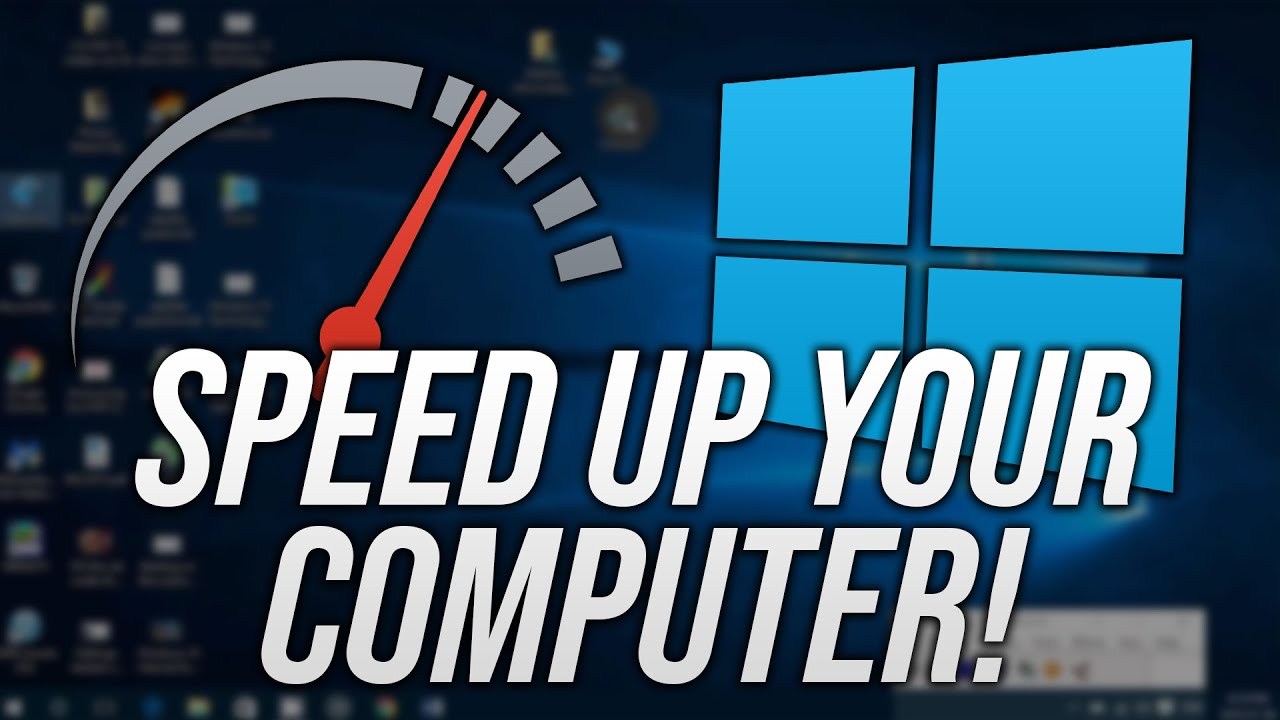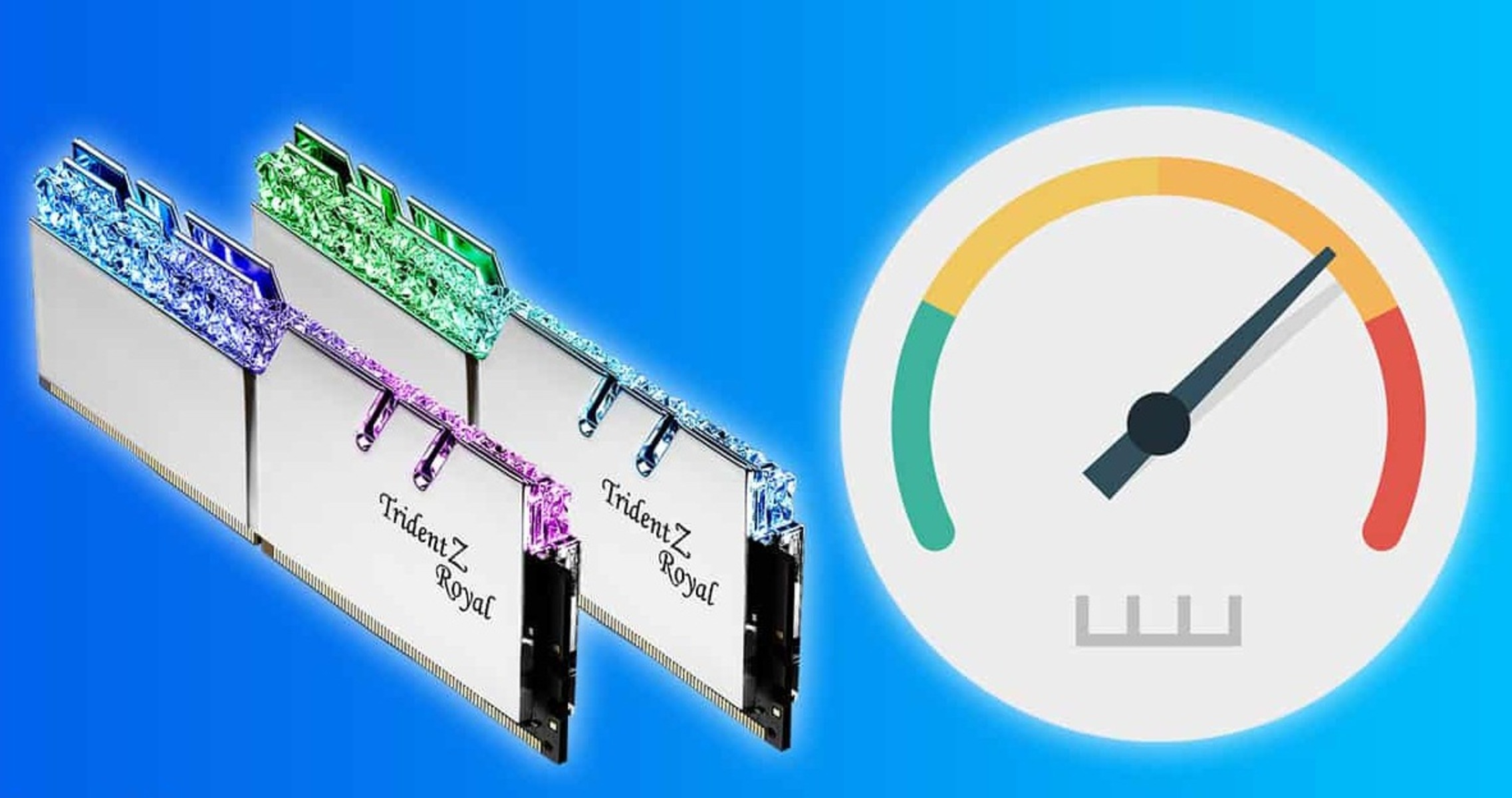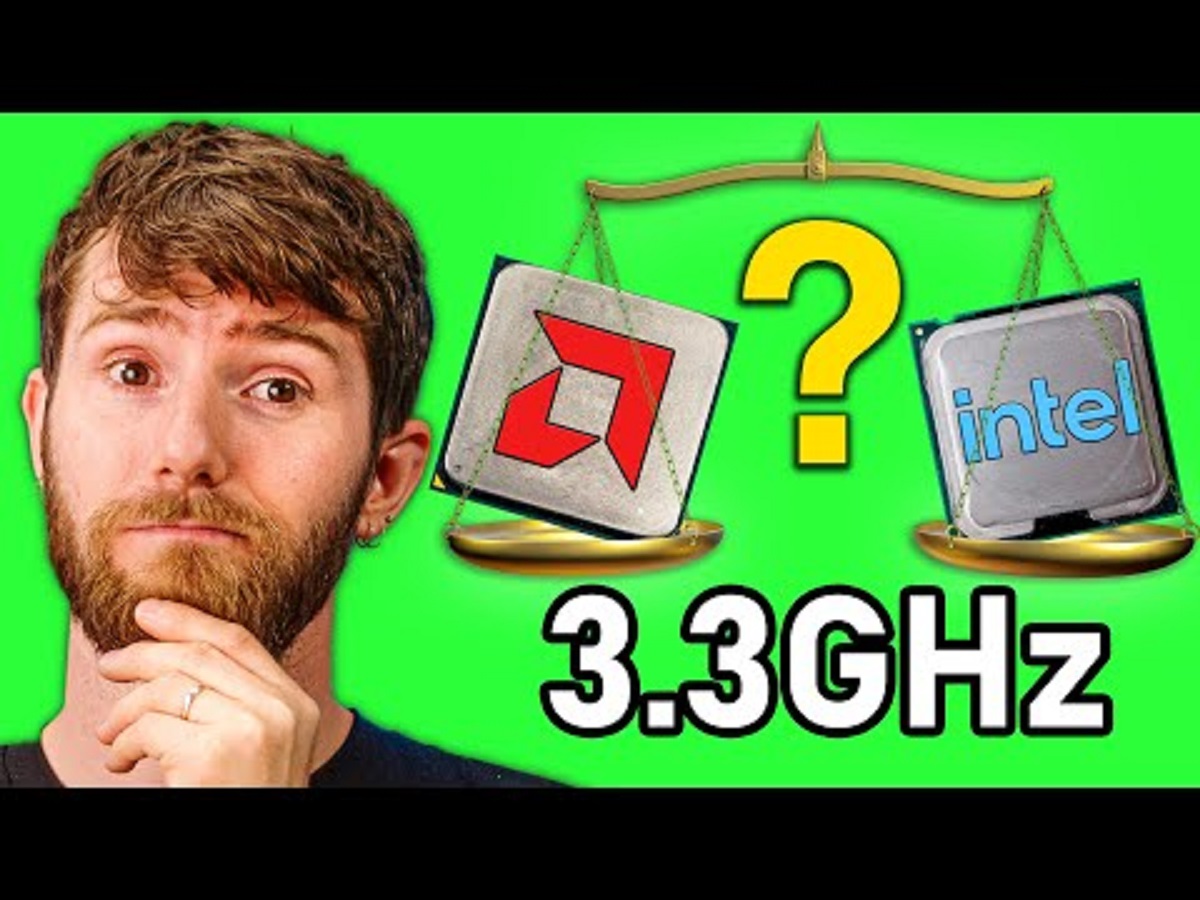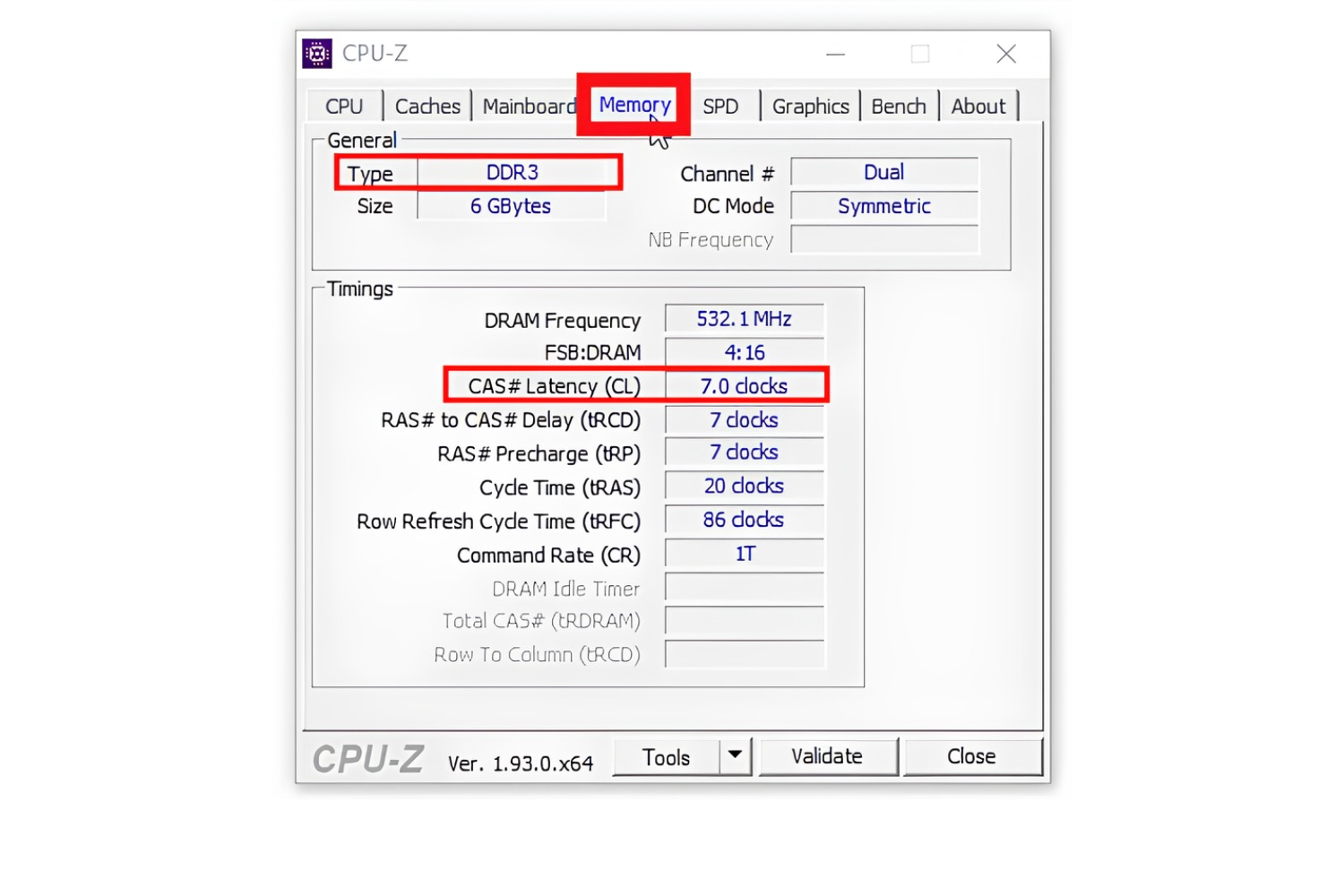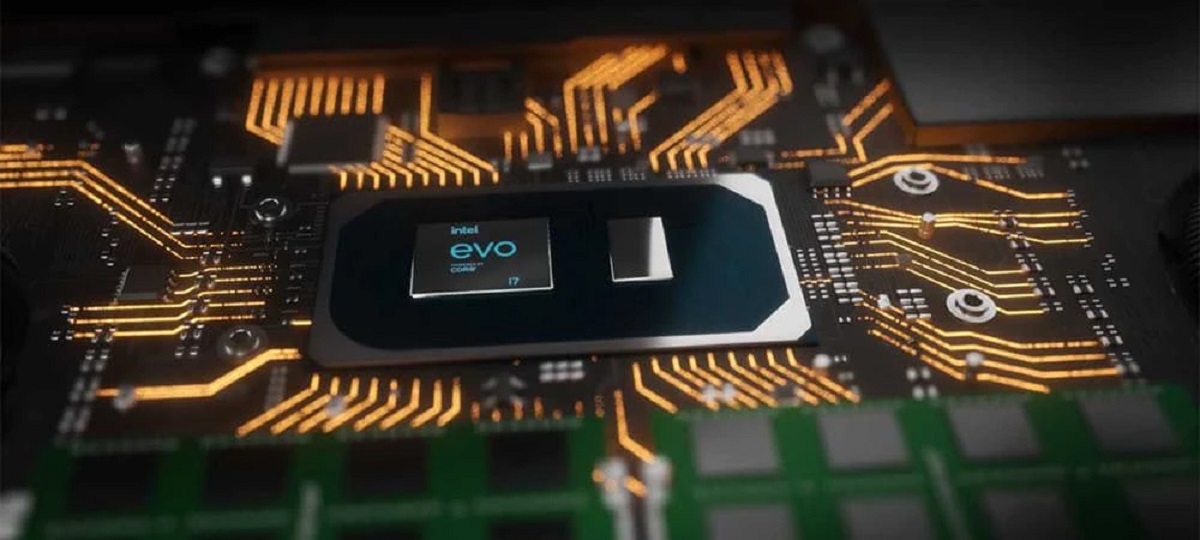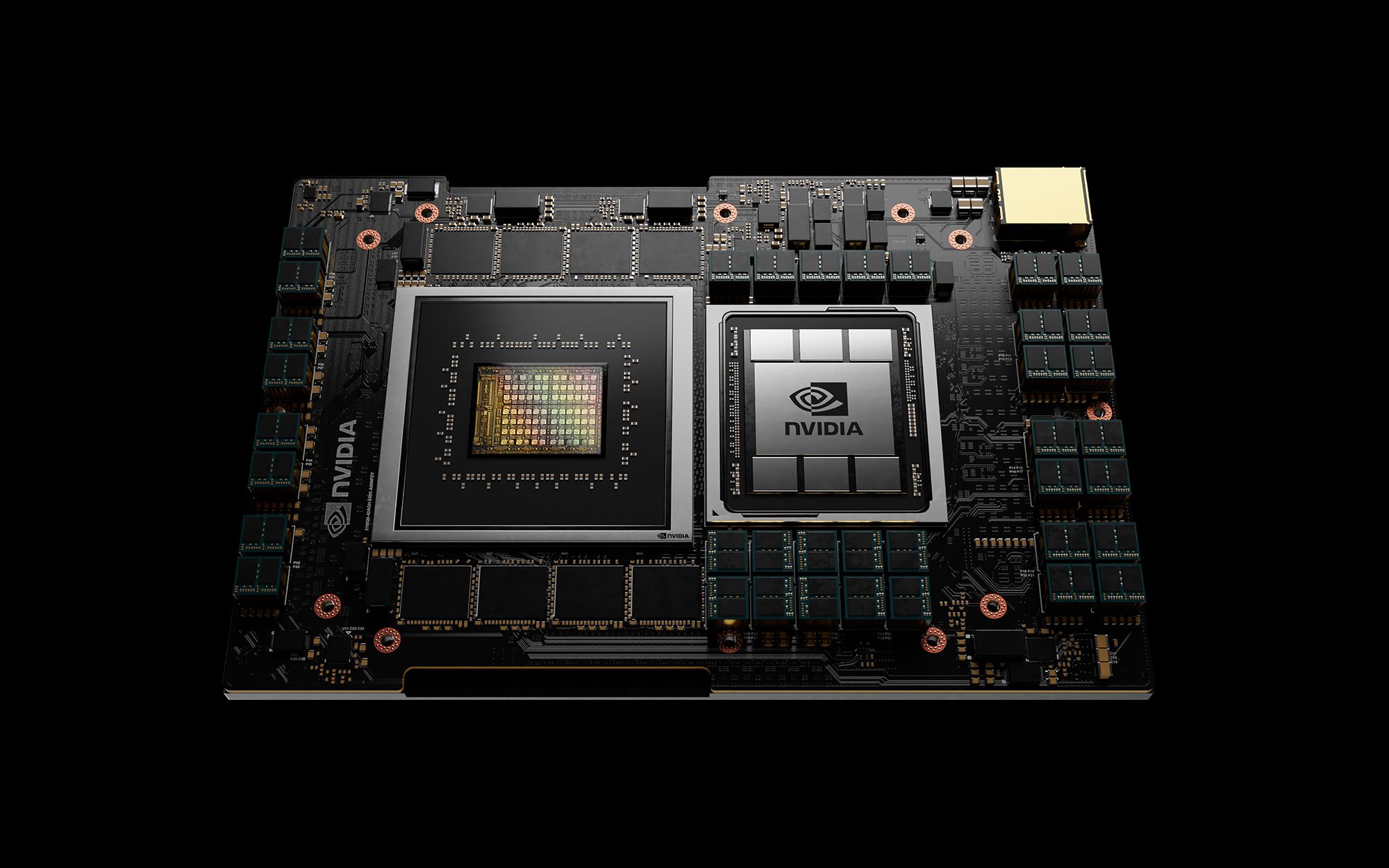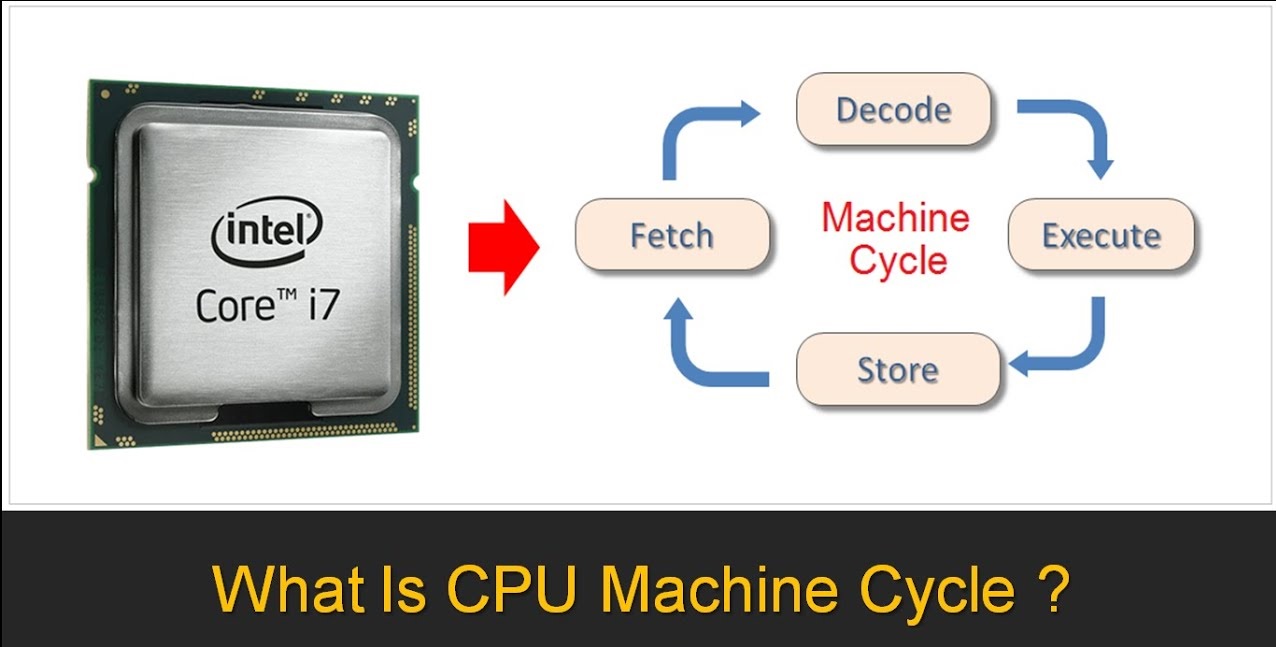Introduction
Welcome to the world of computing! Whether you use a desktop or a laptop, the processor (CPU) is the brains of your computer. It’s responsible for executing the instructions that make your applications run smoothly and efficiently. However, over time, you may notice that your CPU is not performing as quickly as it used to. Don’t worry, there are several steps you can take to make your CPU faster and improve your overall computing experience.
The speed and performance of your CPU can be affected by various factors, such as unnecessary programs running in the background, outdated operating system and drivers, insufficient RAM, and more. In this article, we will explore different strategies that will help you optimize your CPU’s performance and enhance your computer’s speed.
From cleaning up your computer and removing unnecessary programs to upgrading your hardware and optimizing system settings, we will cover a range of tips and tricks to get the most out of your CPU. No matter your level of technical expertise, these steps are straightforward and easy to implement.
So, if you’re ready to give your CPU a boost and experience faster computing, let’s dive into the various methods and techniques that will help you make your CPU faster.
Clean up your computer
Before diving into advanced optimizations, it’s important to start with the basics and clean up your computer. Over time, temporary files, cache data, and unnecessary programs can accumulate, which can slow down your CPU’s performance. Here are some essential steps to clean up your computer and make your CPU faster:
- Remove temporary files: Temporary files are created by various applications and can take up valuable storage space. Use the built-in disk cleanup tool on your operating system to remove these files and free up disk space.
- Delete unnecessary programs and apps: Take some time to review the programs and apps installed on your computer. Uninstall any that you no longer need or use. This will not only free up storage space but also reduce the number of background processes running, resulting in improved CPU performance.
- Clean up your web browser: Internet browsers store cookies, cache, and browsing history, which can slow down your browsing experience. Clearing these data regularly will not only enhance your internet speed but also relieve the burden on your CPU.
- Organize your files and folders: A cluttered desktop or disorganized file structure can impact your CPU’s performance. Take the time to organize your files into logical folders and delete any unnecessary files.
By following these simple steps, you can not only free up storage space but also ensure that your CPU is not overwhelmed by unnecessary processes and data. A clean and optimized computer will provide a solid foundation for boosting your CPU performance.
Remove unnecessary programs and apps
One of the key factors that can slow down your CPU is having too many unnecessary programs and apps installed on your computer. These applications often run in the background, consuming valuable system resources and contributing to slower performance. To make your CPU faster, you should identify and remove any programs or apps that you no longer use or need. Here are some steps to help you accomplish this:
- Review your installed programs: Open the Control Panel (Windows) or Applications (Mac) and take a look at the list of installed programs. Identify any applications that you no longer use or that are no longer relevant to your needs.
- Uninstall unwanted programs: Once you have identified unnecessary programs, uninstall them using the built-in uninstaller tool. On Windows, this can be found in the Control Panel under “Programs and Features,” while on Mac, you can simply drag the application to the Trash.
- Consider alternative solutions: Some programs may have suitable alternatives that offer similar functionality. Research and find alternative software that may be more efficient or better tailored to your needs.
- Manage startup programs: Many programs automatically run at startup, consuming CPU resources and slowing down your computer’s boot time. Review your startup programs and disable any that are unnecessary. On Windows, you can do this through the Task Manager or System Configuration tool, while on Mac, you can manage startup programs through the Users & Groups settings.
By removing unnecessary programs and apps, you can declutter your system and reduce the load on your CPU. This, in turn, will contribute to faster performance and smoother overall operation. Regularly reviewing and managing your installed programs is a good practice to ensure that your CPU is dedicated to running the applications that are essential to you.
Disable unnecessary startup programs
When you turn on your computer, it often loads a number of programs and applications automatically. While some of these startup programs are necessary for the smooth functioning of your system, others may not be essential and can contribute to a slower CPU performance. Disabling unnecessary startup programs can help speed up your computer’s boot time and free up valuable system resources. Here’s how to do it:
- Windows: To manage startup programs on Windows, open the Task Manager by pressing Ctrl+Shift+Esc or by right-clicking on the taskbar and selecting “Task Manager.” In the Task Manager, navigate to the “Startup” tab, where you will find a list of programs that run at startup. Right-click on the program you want to disable and select “Disable.”
- Mac: Managing startup programs on a Mac is straightforward. Go to System Preferences, click on “Users & Groups,” and select your user account. Then, navigate to the “Login Items” tab, where you will see a list of programs that start automatically. Select the program you want to disable and click on the “- ” button below the list.
- Third-party tools: If you prefer a more user-friendly approach, there are third-party software tools available that can help you manage startup programs efficiently. These tools provide detailed information about each startup program and allow you to enable or disable them with just a few clicks.
By disabling unnecessary startup programs, you can streamline the boot process and allocate more CPU resources to the applications you use actively. This can significantly improve your computer’s performance and reduce the time it takes for your system to become fully operational.
It’s worth noting that while disabling unnecessary startup programs can help make your CPU faster, it’s important to exercise caution and avoid disabling any essential system programs or antivirus software. Be selective and only disable programs that you are confident are non-essential to your computing experience.
Update your operating system and drivers
Updating your operating system and drivers is crucial for maintaining optimal CPU performance. Operating system updates often include security patches, bug fixes, and performance improvements that can significantly enhance your computer’s speed. Additionally, updating drivers ensures that your hardware components communicate effectively with the operating system, resulting in smoother operations. Here’s how you can update your operating system and drivers:
- Operating System: On most systems, you can check for updates by going to the “Settings” or “System Preferences” menu and selecting the “Update & Security” or “Software Update” option. If updates are available, follow the on-screen instructions to install them.
- Drivers: To update drivers, you can visit the manufacturer’s website for each component, such as graphics card, sound card, or network adapter, and download the latest drivers. Alternatively, you can use driver update software that automatically scans for outdated drivers and installs the latest versions.
- Automatic updates: To simplify the update process, you can enable automatic updates for both the operating system and drivers. This ensures that you always have the latest updates installed without having to manually check for them.
Updating your operating system and drivers not only improves CPU performance but also enhances system stability and security. It’s essential to keep your computer up to date to take advantage of the latest improvements and fixes provided by developers and manufacturers.
By regularly updating your operating system and drivers, you can ensure that your CPU receives necessary optimizations and that your computer remains in peak condition. Remember to check for updates periodically and install them promptly for the best performance.
Upgrade your hardware
If you’ve tried various software optimizations and your CPU is still not performing up to your expectations, it may be time to consider upgrading your hardware. Upgrading hardware components can have a significant impact on your CPU’s performance, allowing for faster processing speeds and smoother multitasking. Here are some hardware components you can consider upgrading:
- CPU: If your CPU is outdated or incompatible with the software you use, upgrading to a newer and faster model can provide a significant performance boost. Research compatible CPUs for your motherboard and choose one that suits your needs and budget.
- Graphics card: If you use your computer for graphic-intensive tasks such as gaming or video editing, upgrading your graphics card can improve both CPU and graphics performance. A more powerful GPU will handle graphics processing, relieving the CPU of some of its workload.
- Storage: Upgrading to a Solid State Drive (SSD) from a traditional Hard Disk Drive (HDD) can dramatically improve CPU performance. SSDs offer faster data transfer speeds, reducing the time it takes for the CPU to access and retrieve data, resulting in quicker overall system performance.
- RAM: Insufficient RAM can lead to sluggish performance, especially when running memory-intensive applications. Consider upgrading your RAM to a higher capacity to accommodate the demands of your software and allow for smoother multitasking.
Before upgrading any hardware component, it’s important to ensure compatibility with your existing system. Check the specifications of your motherboard and consult manufacturer documentation or online resources for information on compatible hardware upgrades.
Hardware upgrades can be a significant investment, so it’s vital to consider your budget and prioritize components based on your specific needs. Assess which components are bottlenecking your CPU’s performance and invest in upgrades that will provide the most significant improvement.
Upgrading your hardware not only boosts CPU performance but also future-proofs your computer, ensuring that it can handle the demands of new software and applications. When done strategically, hardware upgrades can breathe new life into your CPU and provide a noticeable improvement in overall system speed and performance.
Increase your computer’s RAM
If your computer is running slow and you frequently experience performance issues, increasing your computer’s RAM (Random Access Memory) can be a game-changer. RAM is a vital component that temporarily stores data and instructions needed by the CPU to perform tasks. Insufficient RAM can cause your CPU to rely on slower storage devices, resulting in slower performance. Here’s how you can increase your computer’s RAM:
- Determine your RAM capacity: Check your computer’s specifications to identify the current capacity of your RAM. You can usually find this information in the system properties or by referring to the manufacturer’s documentation.
- Select compatible RAM modules: Once you know your computer’s RAM capacity, choose compatible RAM modules to increase its size. Consider factors such as the type (DDR2, DDR3, DDR4), speed, and form factor (DIMM, SODIMM) to ensure compatibility with your motherboard.
- Install the new RAM: Shut down your computer and remove the case cover. Locate the RAM slots on your motherboard and carefully insert the new RAM modules, ensuring they are securely in place. Refer to your motherboard’s manual for specific instructions.
- Verify RAM recognition: After installing the new RAM, turn on your computer and check if it recognizes the increased RAM capacity. You can verify this through the system properties or by using third-party software.
Increasing your computer’s RAM allows for smoother multitasking, improved responsiveness, and faster application loading times. It reduces the need for the CPU to constantly access the slower disk storage, resulting in a significant boost in overall performance.
However, it’s worth noting that increasing RAM is not a viable solution if your CPU is already capable of handling the tasks you perform. It’s important to analyze your computer’s performance needs and determine if additional RAM is the most suitable solution.
By increasing your computer’s RAM, you enable it to handle more demanding tasks and applications with ease. This can make a noticeable difference in your CPU’s performance and enhance your computing experience overall.
Upgrade to a Solid State Drive (SSD)
If you’re looking to significantly boost your CPU’s performance, upgrading to a Solid State Drive (SSD) is an excellent investment. Unlike traditional Hard Disk Drives (HDDs), SSDs use flash memory to store data, resulting in much faster read and write speeds. This enhanced speed translates into quicker boot times, faster application loading, and overall smoother performance. Here’s what you need to know about upgrading to an SSD:
- Choose the right SSD: There are various types and sizes of SSDs available, so it’s important to select one that is compatible with your computer. Consider factors such as form factor (2.5-inch, M.2, etc.), storage capacity, and interface (SATA, NVMe) when choosing an SSD.
- Backup your data: Before installing the new SSD, make sure to back up all your important data. This will ensure that you don’t lose any files during the upgrade process.
- Replace or add an SSD: Depending on your computer’s configuration, you can either replace your existing HDD with the SSD or add the SSD as an additional drive. If you’re replacing the HDD, you’ll need to clone the contents of your existing drive onto the SSD. If you’re adding an SSD, you’ll need to install it in an available drive bay and transfer your desired files or install your operating system on it.
- System setup and optimization: Once the SSD is installed, you’ll need to adjust your computer’s BIOS settings to recognize the new drive and set it as the boot drive (if applicable). Additionally, you may need to perform optimizations such as aligning partitions and enabling TRIM to ensure optimal SSD performance.
Upgrading to an SSD can provide a substantial performance boost to your CPU. The faster read and write speeds of the SSD greatly reduce data transfer times, enabling your CPU to access files and data more quickly.
It’s important to note that while SSDs offer significant performance improvements, they typically have a lower storage capacity compared to HDDs. Consider your storage needs and budget when choosing the size of the SSD or if you should opt for a hybrid configuration with both SSD and HDD drives.
By upgrading to an SSD, you can experience significant improvements in your CPU’s performance. Quicker boot times, faster application loading, and overall snappier system responsiveness are just some of the benefits you can enjoy with an SSD upgrade.
Use a cooling pad or upgrade your CPU cooler
Overheating can greatly impact your CPU’s performance, causing it to throttle and slow down to prevent damage. To ensure that your CPU operates at its full potential, it’s important to keep it cool. The two main approaches to cooling your CPU are using a cooling pad or upgrading your CPU cooler. Let’s explore these options in detail:
- Cooling pad: If you primarily use a laptop, investing in a cooling pad can help keep your CPU temperatures in check. Cooling pads are equipped with fans that improve airflow around your laptop, dissipating heat more effectively. Look for a cooling pad with adjustable fan speeds and positioning to suit your specific laptop model.
- CPU cooler upgrade: If you have a desktop computer, upgrading your CPU cooler can be a more effective solution. Stock CPU coolers that come with the processor are often basic and may struggle to adequately cool your CPU, especially during intensive tasks. Investing in an aftermarket CPU cooler with better heat dissipation capabilities can help keep your CPU temperatures low and improve overall performance.
When selecting a CPU cooler, consider factors such as compatibility with your CPU socket, cooling performance, noise level, and budget. There are air coolers and liquid coolers available, each with its own pros and cons. Research reputable brands and read reviews to find the best cooler for your needs.
In addition to using a cooling pad or upgrading your CPU cooler, it’s essential to ensure proper airflow within your computer case. This can be achieved by maintaining clear pathways for air intake and outflow, organizing cables to avoid blocking airflow, and regularly cleaning dust from cooling fans and vents.
By keeping your CPU temperatures under control, you can prevent thermal throttling and ensure that your CPU operates at its maximum potential. Cooler temperatures allow for more stable and reliable performance, ultimately enhancing the speed and overall efficiency of your computer.
Use a reputable antivirus program
In today’s digital landscape, protecting your computer from malware and viruses is essential to maintain optimal CPU performance. Malware can not only compromise your data and privacy but also cause your CPU to slow down or become unresponsive. To safeguard your computer and keep your CPU running smoothly, it’s crucial to use a reputable antivirus program. Here’s why it’s important and how to choose the right one:
The importance of antivirus software:
A robust antivirus program protects your computer by detecting and removing malicious software that can harm your system and impact CPU performance. It scans your files, emails, downloads, and web browsing to identify and eliminate threats in real-time. By preventing viruses, spyware, and other malware from infecting your computer, an antivirus program can significantly enhance your CPU’s performance and overall system speed.
Choosing the right antivirus program:
When selecting an antivirus program, consider the following factors:
- Reputation: Opt for a well-established and reputable antivirus provider. Research user reviews and independent test results to assess the effectiveness of different antivirus programs.
- Features: Look for features such as real-time scanning, malware removal, firewall protection, and regular automatic updates. Additional features like ransomware protection and privacy tools can further enhance your computer’s security.
- System impact: Some antivirus programs can consume a significant amount of CPU resources, resulting in decreased overall performance. Choose an antivirus program that strikes a balance between effective protection and minimal impact on CPU usage.
- User-friendliness: Consider the user interface and ease of use. A well-designed and intuitive antivirus program will make it easier for you to navigate and configure the software to suit your needs.
- Cost: Antivirus programs are available in both free and paid versions. Free versions provide basic protection, while paid versions offer additional features and advanced security options. Assess your budget and the level of protection required to make the best choice.
Maintain regular updates:
After installing an antivirus program, make sure to keep it up to date. Regular updates ensure that your antivirus software has the latest virus definitions and security patches, enabling it to effectively detect and mitigate emerging threats. Set up automatic updates to streamline the process and ensure ongoing protection for your CPU.
By using a reputable antivirus program, you can minimize the risk of malware infections and keep your CPU running smoothly. Protecting your computer from viruses and other malicious software is essential for maintaining optimal performance and ensuring a secure computing experience.
Disable visual effects
Visual effects, although visually appealing, can consume a significant amount of your CPU’s resources. Disabling unnecessary visual effects can free up CPU power and improve overall system performance. By reducing the strain on your CPU, you can achieve faster response times and smoother multitasking. Here’s how you can disable visual effects:
- Windows: On Windows, you can access the visual effects settings by right-clicking on “This PC” or “My Computer” and selecting “Properties.” From there, click on “Advanced system settings” and navigate to the “Performance” settings under the “Advanced” tab. Here, you can choose to adjust the visual effects according to your preference, such as disabling animations, shadows, and transparency.
- Mac: On a Mac, you can manage visual effects by going to “System Preferences” and selecting “Accessibility.” Then, under the “Display” tab, check the box for “Reduce motion” to simplify the visual effects and reduce the strain on your CPU.
By disabling visual effects, your CPU can focus its resources on running essential applications and processes more efficiently. This allows for improved responsiveness and a smoother computing experience.
While disabling visual effects can enhance performance, it’s important to strike a balance between aesthetics and functionality according to your personal preferences. You may choose to disable certain effects that have a significant impact on performance, while leaving others enabled to maintain a visually pleasing user interface.
Keep in mind that the specific steps to disable visual effects may vary depending on your operating system version and settings. It’s a good idea to research the steps for your specific operating system or consult the official documentation for further guidance.
By selectively disabling visual effects, you can optimize your CPU’s performance and ensure that the computing power is utilized efficiently for your essential tasks. The result is a snappier and more responsive computing experience.
Limit background processes
Background processes and applications running on your computer can consume valuable CPU resources, leading to slower overall performance. By managing and limiting these background processes, you can allocate more CPU power to the tasks that are essential to you, improving speed and responsiveness. Here are some ways to limit background processes:
- Task Manager: On Windows, you can access the Task Manager by pressing Ctrl+Shift+Esc or right-clicking on the taskbar and selecting “Task Manager.” In the Task Manager, navigate to the “Processes” or “Details” tab to view a list of running processes. Identify processes that are not necessary and end them by right-clicking and selecting “End Task.”
- Activity Monitor: On a Mac, you can access the Activity Monitor by going to “Applications” -> “Utilities” -> “Activity Monitor.” In the Activity Monitor, navigate to the “CPU” tab to view a list of running processes and their CPU usage. Identify processes that are consuming a significant amount of CPU resources and quit them if they are not essential.
- Disable unnecessary startup programs: Many programs automatically run in the background when you start your computer, consuming CPU resources. You can manage startup programs through the Task Manager (Windows) or System Preferences (Mac) settings by disabling programs that aren’t essential at startup.
- Uninstall or disable resource-intensive applications: Some applications are known to be resource-intensive, placing a heavy load on your CPU even when running in the background. Consider uninstalling or disabling these unnecessary applications to free up CPU resources.
By limiting background processes, you can prevent CPU bottlenecks and ensure that your computer’s CPU power is dedicated to the tasks that matter to you. This can result in faster application launches, smoother multitasking, and improved overall system performance.
However, be cautious when limiting background processes, as some processes are necessary for the proper functioning of your operating system and essential software. It’s important to research and understand the purpose of each process before terminating or disabling it.
By actively managing and limiting background processes, you can reclaim valuable CPU resources and optimize performance. It’s a simple yet effective way to ensure that your CPU runs at its full potential, delivering a fast and efficient computing experience.
Keep your computer dust-free
A commonly overlooked factor that can affect the performance of your CPU is the accumulation of dust and debris inside your computer. Over time, dust can clog cooling components, such as fans and heat sinks, impeding proper airflow and causing your CPU to overheat. To maintain optimal CPU performance and prevent potential hardware issues, it’s essential to keep your computer dust-free. Here are some tips to help you achieve this:
- Regular cleaning: Schedule regular cleaning sessions to remove dust from your computer. Use a soft, lint-free cloth or compressed air to gently clean the exterior surfaces and vents to prevent dust build-up.
- Focus on cooling components: Pay special attention to the cooling components within your computer, such as fans and heat sinks. These components are crucial for dissipating heat away from your CPU, so keeping them free from dust is essential. Use compressed air to blow out dust from fan blades and heat sink fins, ensuring proper airflow.
- Clean the power supply: The power supply unit (PSU) can also accumulate dust, affecting its cooling ability and overall system stability. Be cautious when cleaning around the power supply and use compressed air to blow away dust, taking care not to damage any internal components.
- Ensure proper ventilation: Place your computer in a well-ventilated area where air can freely circulate. Avoid placing it on soft surfaces that can block air intake or trap dust. Additionally, ensure that the computer’s intake and exhaust vents are not obstructed.
- Consider dust filters: If dust is a recurring problem, consider installing dust filters on your computer’s intake vents. These filters can help minimize dust accumulation and make cleaning easier.
By keeping your computer dust-free, you can prevent dust-related issues that can hinder CPU performance. The accumulation of dust can lead to higher operating temperatures, causing your CPU to throttle or even crash, resulting in poor performance and potential hardware damage.
Regular cleaning and maintenance not only help in maintaining the CPU’s performance but also extend the longevity of your computer. By ensuring proper airflow and keeping cooling components dust-free, you promote more efficient cooling and optimize the overall performance of your CPU.
Incorporate regular dust cleaning into your computer maintenance routine, and you’ll enjoy a cleaner and more reliable computing experience.
Conclusion
Keeping your CPU running at optimal speed and performance is essential for a smooth and efficient computing experience. By implementing the tips and techniques outlined in this article, you can make your CPU faster and enhance overall system performance. Whether you clean up your computer, remove unnecessary programs, update your operating system and drivers, upgrade your hardware, or implement other optimization strategies, each step contributes to improving your CPU’s speed and efficiency.
From basic optimizations such as cleaning up your computer and removing unnecessary programs to more advanced strategies like upgrading your hardware or installing an SSD, there are multiple options available to suit your specific needs and budget. It’s important to assess your requirements and prioritize the solutions that will have the most significant impact on your CPU’s performance.
Remember to conduct regular maintenance, stay up to date with operating system and driver updates, and keep your computer dust-free to prevent any potential performance issues. Additionally, using a reputable antivirus program and limiting background processes can further enhance your CPU’s performance and ensure a secure computing environment.
By following these recommendations, you can make your CPU faster, improve multitasking capabilities, reduce lag, and boost overall system responsiveness. With a faster CPU, you’ll be able to tackle resource-intensive tasks, enjoy smoother gaming experiences, and increase productivity on your computer.
Keep in mind that every computer system is different, and the effectiveness of each optimization may vary. It’s recommended to experiment and find the ideal setup that works best for your specific hardware configuration and usage requirements.
By taking the necessary steps to make your CPU faster, you’ll be able to unlock its full potential and enjoy a faster, more efficient computing experience.







